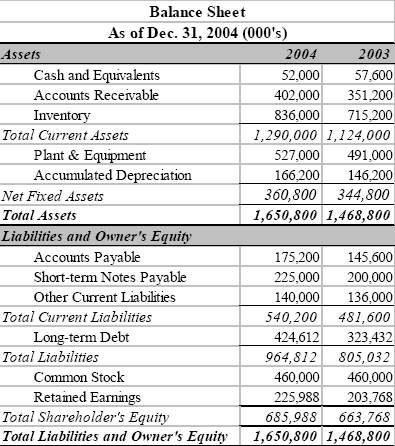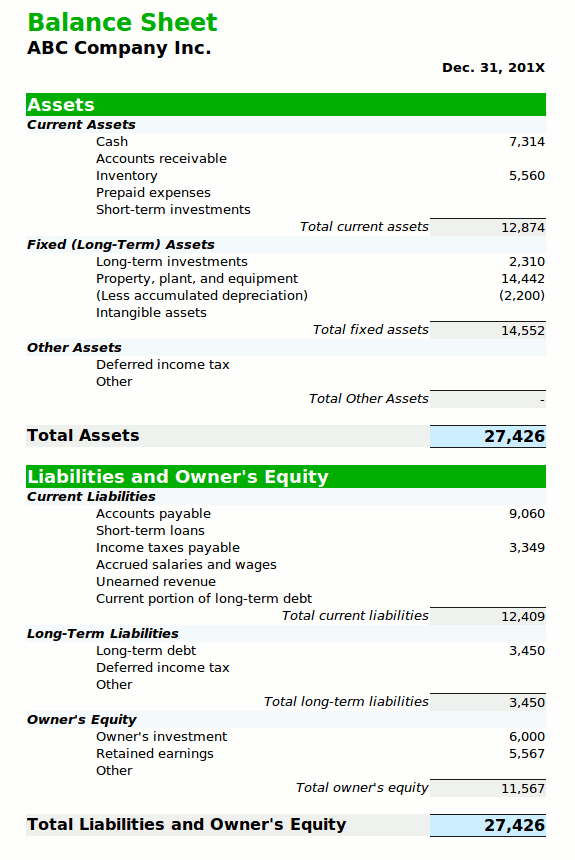Retained Earnings on the Balance Sheet
Post on: 10 Май, 2015 No Comment

Investing Lesson 3 — Analyzing a Balance Sheet
When a company generates a profit, management has one of two choices: They can either pay it out to shareholders as a cash dividend. or retain the earnings and reinvest them in the business. That reinvestment may be used to fund acquisitions, build new factories, increase inventory levels, establish larger cash reserves, reduce long-term debt. hire more employees, start a new division, research and develop new products. buy common stock in other businesses, purchase equipment to increase productivity, or a host of other potential uses.
When the executives decide that earnings should be retained, they have to account for them on the balance sheet under shareholder equity. This allows investors to see how much money has been put into the business over the years. Once you learn to read the income statement. you can use the retained earnings figure to make a decision on how wisely management is deploying and investing the shareholders’ money. If you notice a company is plowing all of its earnings back into itself and isn’t experiencing exceptionally high growth, you can be sure that the stock holders would be better served if the board of directors declared a dividend.
Ultimately, the goal for any successful management is to create $1 in market value for every $1 of retained earnings. Any business that insisted upon keeping the profit that belonged to you, the owner, without ever sending funds to you in the form of a dividend or increasing your own wealth through higher capital gains is not going to have much utility. Investing is about putting out money today for more money in the future. No rational personal would continue to hold a stake in a corporation that never permitted any of the rewards to flow through to the stockholder.
Retained Earnings Examples from Real Companies
Let’s look at an example of retained earnings on the balance sheet.
- Microsoft has retained $18.9 billion in earning over the years. It has over 2.5 times that amount in stockholder equity ($47.29 billion), no debt, and earned over 12.57% on its equity last year. Obviously, the company is using the shareholder’s money very effectively. With a market cap of $314 billion, the software giant has done an amazing job.

The Lear example deserves a closer look. It is immediately apparent that shareholders would have been better off had the company paid out its earnings as dividends. Unfortunately, the economics of the company are so bad had the profits been paid out, the business probably would have gone bankrupt. The earnings are reinvested at a sub par rate of return. An investor would earn more on the earnings by putting them in a CD or money market fund then by reinvesting them into the business.
1.) You may be wondering how the company has a supposed book value of $23.77 per share, and yet the shareholders owe a billion and a half dollars. If you look at Lear’s balance sheet, you will notice it shows shareholder equity of $1.6 billion and tangible assets of -1.665 billion. This doesn’t look as horrible as it is until you discover $3.27 billion of the assets on the company’s balance sheet consist of goodwill. The shareholders’ equity is being inflated by the goodwill figure — without it, the shareholders are left owing money to the company’s creditors.
This page is part of Investing Lesson 3 — Understanding the Balance Sheet. To go back to the beginning, see the Table of Contents . If you have already read this lesson, you can skip directly to the Balance Sheet Quiz .














